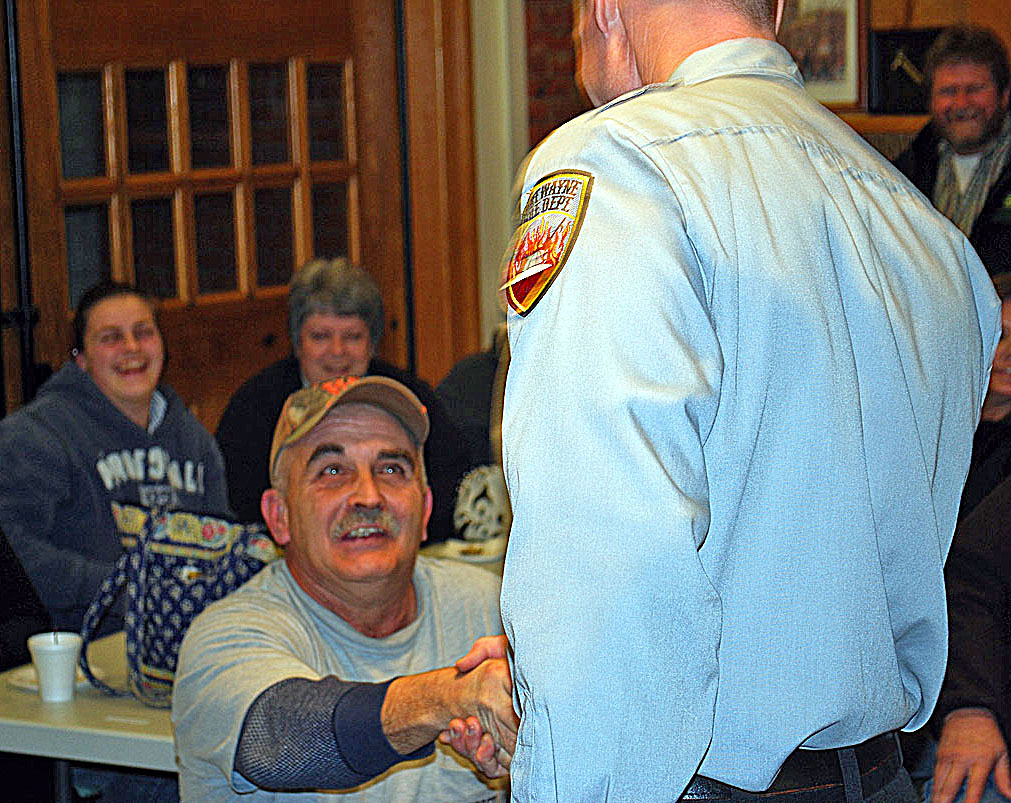Man Saved Meets Rescuers
With hopes of saying "thanks", Gary Smith of Whitley County contacted the Fort Wayne Fire Department asking to ar range an opportunity to shake hands with the firefighters who saved his life.
range an opportunity to shake hands with the firefighters who saved his life.
Smith's ordeal began January 6, when he fell while cleaning an eighty foot silo at the Ag Plus facility at 5480 S. Raber Road and became trapped waist deep in soybeans. While the fall was not traumatic, the weight of the beans prevented Smith from being pulled to safety. The Fort Wayne Fire Department's Technical Rescue Team was dispatched to assist the Jefferson Township Fire Department with the rescue. After more than eight hours, Smith was pulled to safety and transported to a local hospital in stable condition.
On January 18, Smith and the firefighters that saved his life were reunited at a small reception hosted at IAFF Fort Wayne Firefighters Local 124's Union Hall. With more than 60 friends, family and co-workers attending, Smith got to shake hands with the firefighters involved in the rescue operation. "Most grain falls don't have a happy ending," Smith said. "The fact that I am here is a miracle. You guys did a great job."
Deb Smith, Gary's wife, reiterated her and her family's gratefulness for the support, treatment and efforts made to save her husband. "Not only did you save my husband's life, you saved my best friend. We thank you from the bottom of our hearts for everything you did for Gary."
While firefighters from both departments were grateful for the opportunity to meet Smith they insist their life-saving efforts were just part of their jobs.
Gary Smith says, "I know personally they sure do one heck of a job."
Gary continues to heal at home. While still sore, he anxiously awaits approval to return to work.







 range an opportunity to shake hands with the firefighters who saved his life.
range an opportunity to shake hands with the firefighters who saved his life. 